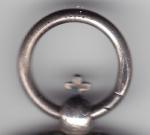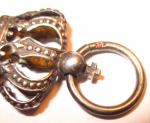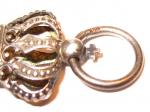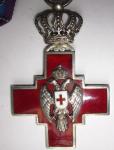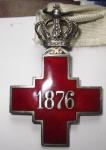-
Posts
32 -
Joined
-
Last visited
Profile Information
-
Location
The Northern Dominion
Recent Profile Visitors
Ceylon's Achievements
-
Ceylon changed their profile photo
-
Colleagues: I just acquired a BWM with the following unit abbreviation in the naming, ie., S.A. Vet. Regt. Although I feel fairly certain that the unit is the South African Veteran Regiment I am afraid I have not been able to uncover much more about the unit except: it seems to have been connected with the war in German SWA, and renamed the Protectorate Garrison Regiment in 1916. Apart from that, I have not been able to discover much about it. If anyone has any additional information on this unit and its activities during the Great War, I would be most grateful to learn of it. For instance, I was hoping to obtain a bit more information such as: 1. the recipients were (obviously?) veterans... but veterans of what? ... the early phases of the Great War? .. (only?) the campaign in German SWA?... or veterans, in general? Put another way: what was the (specific) criteria for membership in this unit? 2. If they were veterans of the campaign in German SWA, (which seems like it might have been the case, based upon a couple of snippets I have uncovered thus far via Google), why were these veterans released from service? ... ie., why did they not carry-on in their original units for the balance of the Great War? ... were they wounded? (or otherwise disabled?)... did they not volunteer for "general service", (ie., outside of South Africa) and therefore could not be sent abroad? 3. Alternatively were they, somehow, connected to the Union Government's efforts to suppress the 1914 Rebellion? 4. How long was the unit in existence? 5. What did they do?... ie., what was their military role/function? Did they serve as a sort of labour corps, or in an administrative function, or as a type of (military?) police constabulary? 6. Were they, in fact, limited in their service to a certain geographic area? 7. Were they mounted, mechanized, or on foot? ... or in offices? So many questions that simply knowing they were "veterans" do not answer. I have looked for an article which addresses these types of questions (and more) but whomever they are, and whatever they did, this unit does not seem to have left much of an historical footprint. I have consulted the Official History of the Union of South Africa in the Great War (NMP's reprint) but since it has no index, it was a bit hit-and-miss. So... any leads or additional information grateful received. Cheers, Glen, In Our Dominion of the North PS: The following snippet goes a little way towards answers some of the above questions, but (regrettably) not too far. Its from a Google Books online search.
-
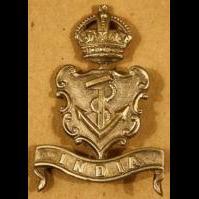
Serbia Serbian Red Cross Decoration - Great War
Ceylon replied to Ceylon's topic in Southern European & Balkan States
Thank you, Gentlemen. As always I am grateful that you took the time to share with me your knowledge. I guess we'll just have to wait and see... until more information comes along, Cheers, Glen -

Serbia Serbian Red Cross Decoration - Great War
Ceylon replied to Ceylon's topic in Southern European & Balkan States
Ok Guys... thanks again for your willingness to help. Here are some more images -- this time made with a scanner -- so maybe a little better detail? First, a couple more overall images of the decoration... obverse and reverse. Now the ring: obverse; first an overall image, then a close-up on the area that looks like it might have some makers marks. Now the reverse of the ring; first overall, then a close-up of the "800" mark. -

Serbia Serbian Red Cross Decoration - Great War
Ceylon replied to Ceylon's topic in Southern European & Balkan States
Thanks, Paja. I appreciate your insights. I have to admit, try as hard as i can, I am having difficulty seeing the traditional "HF" hallmark of the Huguenin Brothers on this ring. Hence ... my doubts. Cheers, Glen -

Serbia Serbian Red Cross Decoration - Great War
Ceylon replied to Ceylon's topic in Southern European & Balkan States
I finally got around to taking images of the makers marks on the decoration's ribbon ring. Can I assume that this confirms the maker was Huguenin? Cheers, Glen -

Serbia Serbian Red Cross Decoration - Great War
Ceylon replied to Ceylon's topic in Southern European & Balkan States
Wonderful... absolutely wonderful. Thank you so much. I am very grateful for your kind assistance. These are exactly the types of figures I was hoping to acquire. Cheers, Glen -

Serbia Serbian Red Cross Decoration - Great War
Ceylon replied to Ceylon's topic in Southern European & Balkan States
Are there any figures available on how many of these were issued? ... Or is that something lost in the post-war upheavals? Cheers, Glen -

Serbia Serbian Red Cross Decoration - Great War
Ceylon replied to Ceylon's topic in Southern European & Balkan States
Thanks very much, Paja. I really appreciate the images and your effort on my behalf. Although I went over the decoration very carefully with a magnifying glass -- and did not find any maker's mark -- I did not think to roll back the ribbon and inspect the ring! I'll do that once I get home tonight! Cheers, and thanks again, Glen, Ottawa, Canada -

Serbia Serbian Red Cross Decoration - Great War
Ceylon replied to Ceylon's topic in Southern European & Balkan States
Thanks. Are you aware of any images of the Rothe's example... for comparison... just curious. Cheers, Glen -

Serbia Serbian Red Cross Decoration - Great War
Ceylon replied to Ceylon's topic in Southern European & Balkan States
Well.. the group finally arrived in the post. It is stunning... absolutely beautiful. There was some discussion early-on in this thread regarding an attempt to ascertain the maker... with the suggestion that if I posted more detailed photos, one might be able to tell. (I looked it over to see if i could see any maker's marks... but no luck... assuming they are obvious, since I don't know where to look! ;-) If there is anything in particular one should look for, please let me know. Here are the images. Cheers, Glen -

Serbia Serbian Red Cross Decoration - Great War
Ceylon replied to Ceylon's topic in Southern European & Balkan States
Wow! What a stroke of luck! ... and very kind of you. Yes, indeed, I would feel honoured if you shared with me the family history. And, if you are interested, I am happy to share with you (and/or your family) any of the research I have gathered on L.F. Hirst. My email is glen.hodgins@sympatico.ca Cheers, Glen -

Serbia Serbian Red Cross Decoration - Great War
Ceylon replied to Ceylon's topic in Southern European & Balkan States
Wow! The way those medals are worn, however, would make any Chancellor of Honours scream! ... wrong order ... and in two rows!! Good thing she was a civilian. -

Serbia Serbian Red Cross Decoration - Great War
Ceylon replied to Ceylon's topic in Southern European & Balkan States
Thank you very much for this information. It sounds a bit like the Order of St John in Britain (and other Commonwealth monarchies). The Sovereign is the patron of the Order, but did not establish the Order -- hence it enjoys a kind of quasi-official status. Is there such a thing as an official Order of Precedence for Serbian awards of this period? That would decide the issue, I think. Here's a British example of a table of precedence: (ie., of official awards):https://www.thegazette.co.uk/London/issue/33554/page/7529 Cheers, Glen -

Serbia Serbian Red Cross Decoration - Great War
Ceylon replied to Ceylon's topic in Southern European & Balkan States
Thanks for that, Rogi. I suppose your last comment is what lies at the heart of my query. If the Red Cross award was not issued by (or in the name of) a Sovereign entity (ie., the King of a country), then (in British practice) it would be considered an unofficial award and (technically) should not have been worn with other (official) awards. It should have been worn separately (ie., on the right side of the chest, with official awards on the left side). This, for example, is what recipients of the Royal Humane Society's Lifesaving Medal must do, since although a prestigious award from a bona fide organisation, it is not issued in the name of the Sovereign -- so therefore is unofficial, and can't be worn with official medals/awards. In practice, however, such rules can only be enforced if the recipient remains in a disciplined organisation like the army, navy, police, etc. As a civilian, there is no one (in practical terms) to enforce the rules (if/when the recipient decides to wear his medals on his civilian jacket). I believe this was the case with Hirst and explains why his medals are mounted as they are. In other words, in summary fashion, here are my conclusions: a) Hirst was awarded the Serbian Red Cross decoration by the Serbian Red Cross (and not the King of Serbia) while serving in a civilian capacity in Serbia in c.1915-16; b) as such, it is an unofficial award and -- as a result -- although he therefore did not need formal permission from the (British) King to wear it, he should have worn it only on the right side of his chest; (with any official awards on the left side); c) as a result of his service in the Royal Army Medical Corps (1917-18) he was awarded the British War Medal and Victory Medal; d) when the war ended he left the army, never to return; e) about 2-3 years later he was awarded his British War and Victory Medal -- which (out of ignorance?) he mounted with his (unofficial) Serbian Red Cross decoration; and f) because he was a civilian, he only wore such medals rarely and when he did, even though they were techincially mounted incorrectly, there was no one around with either the desire or knowledge to point out his error to Hirst... so he continued. The result: his medals have lasted as a single group to this day: together but (technically) incorrectly mounted. Cheers, Glen, In Our Dominion of the North -

Serbia Serbian Red Cross Decoration - Great War
Ceylon replied to Ceylon's topic in Southern European & Balkan States
Thank you for the kind words and the link to Hanson's medals, Paja. The medals are still winging their way to me, but once they arrive, I will be sure to post some close-ups, in the hope that some one can help with any additional information such as the identify of the maker, or the period of issue. One will recall in my initial posting a question asking whether or not these were issued in the name of the King of Serbia or (simply?) by the Serbian Red Cross Society. The reason I ask is because there are no mentions of these Red Cross awards having been granted to Britishers in the London Gazette -- unlike, for example the awards to Britons of the Order of St Sava. See, for example, this Gazette Notification: https://www.thegazette.co.uk/Edinburgh/issue/13081/page/791 (Here's a listing of all 133 London Gazette Notifications with the search term "King of Serbia" in it: https://www.thegazette.co.uk/all-notices/notice?text=%22king%20of%20serbia%22&location-distance-1=1&categorycode-all=all&numberOfLocationSearches=1&results-page-size=10&results-page=1 ) However, after having checked all 133 notifications, I see that none of them refer to the Red Cross decoration, (as per Hirst's award). This is why I suspect that this award was not -- at least technically -- awarded by (or in the name) of the King of Serbia -- for (in accordance with British customary law) no British subject could wear (or even accept) such an award (ie., an award from a foreign Sovereign) without their own King or Queen's formal approval (hence the Gazette Notifications granting Britons permission to wear such awards highlighted in the above links). The same practice, of course, continues today. My wife, for instance, was awarded the Ordre des Palmes Académiques by the French government, and had to wait a year to accept it until formal permission was gazetted. At any rate... any thoughts on my theory that this Red Cross award was not issued in the name of the King of the Serbs, but rather (only?) by the Serbian Red Cross, would be greatly appreciated. Cheers, Glen, In Our Dominion of the North






